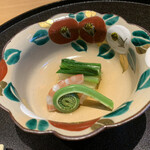
鷹庵
Takaan
3.10
Takaragaike, Kitayama
「Japanese Cuisine」
20,000-29,999円
--
Opening hours: [Monday-Sunday, holidays]18:00-21:00 Open Sundays Hours of operation and
Rest time: are subject to change, so please check with the store before visiting.
京都府京都市北区大北山鷲峯町1
Photos
(20)

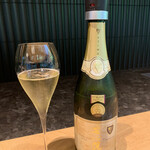
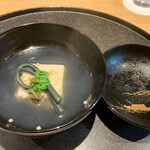
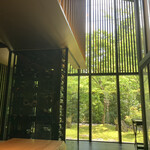
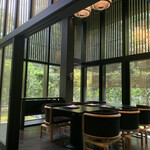
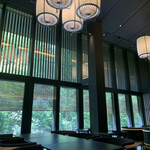
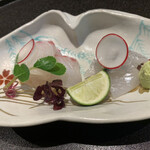

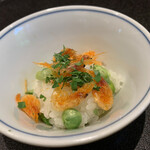

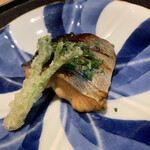
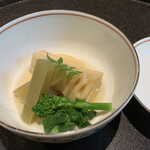
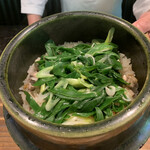
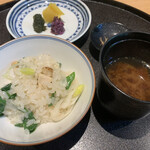
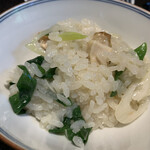
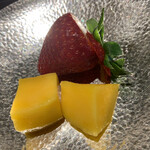
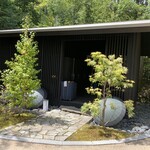

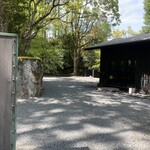
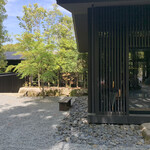
Details
Reservation Info
can be reserved
Payment Method
Credit cards accepted
Electronic money not accepted
Private Dining Rooms
None
Smoking and Non-Smoking
No smoking at the table
Parking
having
Comments
(21)
eb2002621
4.70
In September 2022, due to an approaching typhoon causing Shinkansen train service disruptions, I departed from Tokyo Station and made a stop in Kyoto before returning. I arrived at Aman Kyoto and dropped off my luggage before heading to visit Jikoin Temple, Ryoanji Temple, and Kinkakuji Temple in that order. At 12 o'clock, I had a reservation at Takaan for lunch. I had visited Takaan for lunch and The Living Pavilion for afternoon tea before, so this was my second visit (about 2 years later). I sat at the counter, which was spacious and allowed for a comfortable dining experience. I ordered a tasting set of Kyoto sake, which included three types of sake. The lunch kaiseki course at Takaan included various dishes such as appetizers, soup, sashimi, sushi, fried sesame tofu, grilled eel, salad, rice, and dessert. Each dish was elegantly presented and delicious, with my personal favorites being the sashimi, Hokki clam service, salad with vinegar dressing, and the chicken and leek rice dish. Overall, the meal was a delightful experience, and I found that enjoying Japanese cuisine in Japan (Tokyo, Aman Tokyo, and Kyoto) was the best choice.
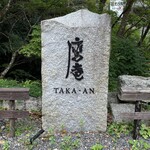

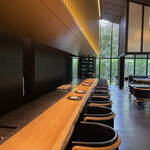
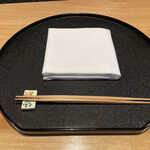
5912t
3.60
The polite service, after finishing the meal, you can be guided through the garden of the accommodation facility. Each time you hear the explanation, it's amazing how much history and money was spent on the garden. It is a privilege to see the garden after dining at Aman, and it is worth coming just to see it. The Japanese food for the meal was honestly not the best. There were also foreign guests dining, but I don't think the seasoning was quite suitable for foreigners. There are many delicious Japanese restaurants in Kyoto. A little disappointing.


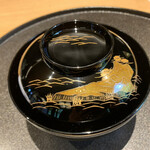

くまトンキチ
3.90
Located near the Kinkaku-ji Temple in Kyoto, at the foot of Mt. Saganaka on the Kamogawa River, is Aman Kyoto. The luxurious hotel was built on the grounds of the former Kamogawa Garden, boasting a massive area equivalent to six and a half Tokyo Domes. I had the pleasure of dining at Takao-an, the Japanese restaurant within Aman Kyoto. The spacious and high-ceilinged interior features a 9.6m single slab counter made of African cherry wood, as well as table seating. Here is the menu I enjoyed for lunch:
- Appetizer: Boiled bracken, urui (mountain vegetable), and shrimp
- Soup: Sesame tofu with rice crackers and bracken in a sweet sauce
- Sashimi: Sea bream and saury
- Rice dish: Cherry shrimp and snow peas rice
- Chawanmushi: Sea bream and seaweed
- Grilled dish: Homemade sauce-grilled cherry trout from Hokkaido and taranome (Japanese angelica tree shoots) tempura
- Simmered dish: Bamboo shoots, butterbur, and rapeseed flowers in a Kiyomizu-yaki (Kyoto-style pottery) vessel
- Rice dish: Kyoto red chicken and Kujo green onions cooked rice with ginger soup poured over it, which was fragrant and delicious!
- Dessert: Strawberries from Nara and mango from Miyazaki
- Tea: Hojicha from Yamamasa Koyamaen
Dining in such a luxurious space while overlooking the Japanese garden was truly a soothing experience. The dishes, made with seasonal ingredients and the skill of the head chef, were delicate and delicious. After the meal, the Aman supervisor kindly guided me through the Kamogawa Garden, providing a truly exceptional visit.

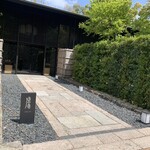
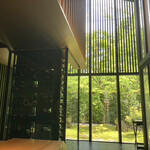

kinako-anko
4.60
On the first day of the Kyoto trip with a typhoon approaching, we visited three World Heritage temples, Ninnaji, Ryoanji, and Kinkakuji, and returned to our accommodation, Aman Kyoto, at 11:50. We had lunch at the Japanese restaurant, Takao, located outside the main gate in the accommodation area. The spacious and calm restaurant had table seating and a 9.6m African cherry wood counter. We were seated at the counter with ample space in between. We opted for the Chef's Special Kaiseki Lunch Course "Taka" for ¥12,000, which included various dishes such as vegetable appetizers, soup, sashimi, grilled surf clam, sushi, fried sesame tofu, grilled eel, salad, simmered dish, rice, pickles, and dessert. The dishes were all meticulously prepared, showcasing the natural flavors of the ingredients. The sea bream sashimi was particularly delicious, sourced from Tsubayama in Hyogo Prefecture. The homemade salmon roe on rice was also a standout, bursting with flavor. The salad, served with a unique vinegar dressing, was a refreshing and delightful dish. The highlight was the Kyoto chicken and Kujo green onion rice served in a hot pot, which was flavorful and comforting. We ended the meal with a selection of fruits for dessert. The entire dining experience was enjoyable, with the chef sharing insights about each dish. After the satisfying lunch, we checked into Aman Kyoto at 1:45 pm, ahead of the scheduled 3:00 pm check-in time.

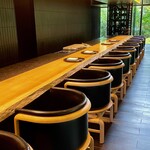
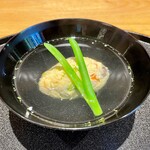
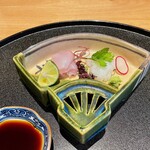
marble.wanwan.jun
4.00
I had never been to a meat cutting restaurant other than Miyoshi, so this was my first challenge. The meat here is Hirai beef, an original brand from the Tanba Ranch in Kyoto. It is said to have a glossy texture and rich flavor due to the natural water underground and carefully selected feed. The course here is a Tanba Hirai beef course, produced by the head chef of Zeniya in Kanazawa. Since I have children, we rented a private room. The appetizer was rare momo meat with a special miso vinegar sauce, refreshing. The konbu-shime was marinated for a whole day, served in a sashimi style with sea urchin and thousand-layer pickles. It was incredibly delicious. The seared sushi was made with kainomi and akami. The dishes were beautifully designed by the contemporary artist Takuo Nakamura, connecting the Rinpa design to the modern era. The charcoal-grilled fillet and zabuton were served. The fillet was delicious. The zabuton, however, had too much fat, and I couldn't eat more than one piece. The thinly sliced roast beef was prepared sukiyaki style. The fat content was too high, and I couldn't eat it. It would have been better if they had prepared it more like sukiyaki or shabu-shabu, as it doesn't suit older people well. The alcohol pairing was excellent.
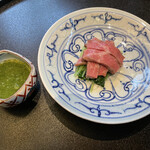
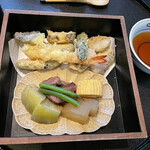


akirakikiku
3.90
I had a dinner pairing and everything had a gentle taste, the pairing was also very good. I was even given a ride on a cart on my way back, which was so much fun. Thank you very much. It was a delicious meal. ☺︎☺︎
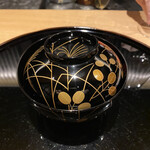
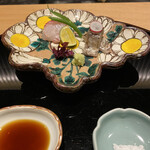


ほいちゃん★
0.00
Sunday lunch♪ I finally got to visit Aman for lunch, a 30-minute drive from home, located in Takao on the north side of the Golden Pavilion. This time, I visited Takaan, a Japanese restaurant. They guided us to a stylish and luxurious space with a 11-meter long counter seat made of a single board. The course we had was 18,000 yen, non-alcoholic sparkling mineral water from New Zealand, vegetable appetizer with daikon, carrot, mitsuba, shojin-fu, Hagi potato, and Matsutake mushroom soup, red snapper and sweet shrimp sashimi with sake and numachi-yuzu dip, sushi with simmered beef tendon, Matsutake mushroom tempura, Hisui ginkgo nuts, Kyoto beef sirloin teriyaki, steamed lotus root with Kaga lotus root, lily bulb, shrimp, and conger eel, corn rice with prosciutto and vegetables, dessert with Toyosui pear, Pione grape, and Shine Muscat, and barley green tea. The dishes had an elegant taste, with perfectly balanced seasoning. The soup was carefully prepared with a rich flavor, and the hot soup was poured into the bowl right in front of us. The temperature management of all dishes was perfect, served at the best condition. The rice dish was a pleasant surprise with a rich vegetable flavor and a hint of pepper, I had seconds. The taste, service, and atmosphere were all perfect. As expected from Aman. Of course, the price is high, but it's worth it for the elegant experience. It was a wonderful Sunday lunch. My companion mentioned another dining option that caught our interest, so we plan to visit there next time.
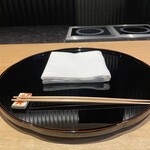
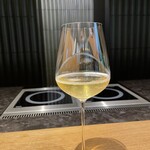
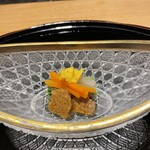
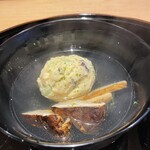
とんし
3.40
Aman. As someone who loves Bali, I have known the world's best hotel for decades. Unlike in Tokyo and New York, all Aman properties are cottages. They are not just accommodation facilities to stay at after sightseeing, but resorts where you stay to spend a day at Aman. There are several Aman resorts in Bali, and my cousin got hooked after I introduced it to her, and she has been going back multiple times. My husband and I can no longer travel abroad because we have a beloved dog, but I would love to visit the overwater cottages in the Maldives and the Aman in Bali before the end of my life. I knew that there are Aman properties in Tokyo, Toba, and Kyoto in Japan, but I couldn't stay there, so I decided to visit the Japanese restaurant Takuan for lunch. The service was top-notch, as expected of Aman, with staff, including chefs, being knowledgeable and professional in their conversations. Their cheese knowledge was impressive, and their approach to pairing was on a different level from stores that sell high-end cheeses without understanding the essence. Every staff member I talked to was flawless. The interior of the restaurant was calming, with a counter made of a single American cherry plank. There were only two other customers, so we could enjoy our meal quietly. The dishes did not use rare ingredients, but the broth was well-prepared. They did not resort to the rough practice of serving insignificant ingredients as sashimi with soy sauce. The grilled gizu and sweet shrimp were seasoned with Okinawan salt, and they had a rich umami flavor, which was delicious. The final dish of eel rice had a strong scent of sansho pepper, but it was tasty. The only dish that I didn't feel like eating was the seared tuna sushi, which had a sweet seasoning to compensate for the weakness of summer tuna. It had black pepper on top, and the tuna flavor was not evident, and it did not match well with the sushi rice, so I wondered why they served it. I couldn't understand the intention or meaning behind it. Well, even though it was not a cheap lunch, the impeccable service made me overlook any dissatisfaction. However, my wife found the sweetfish bitter and unappetizing. After this meal, we had a dinner of ayu dishes at Hiraizan-so, so the impression may have been worse. Several ingredients overlapped, such as winter melon, green peas, which may have made the difference in quality too noticeable. However, the dessert was not out of place. They served mango, which was at the level I eat at home. I like mangoes and eat a reasonably high-quality one twice a week, so I get upset if they serve a lower-quality ingredient than what I eat at home, but they didn't. Since alcohol was not served in Kyoto due to the COVID-19 prevention measures, I might enjoy a wine and sake pairing recommended next time. However, from a management perspective, high-end hotel restaurants have higher costs for labor and facility maintenance than regular restaurants, so they need to keep the cost of ingredients low to match the price. Therefore, if they don't set a considerably high price, the quality of ingredients will be lower than that of regular-priced restaurants. In the case of high-end hotels, the focus is on having private rooms, ensuring no information leaks, having excellent tableware, and providing superior service, so they are not just about seeking cost-effectiveness. Therefore, when comparing dishes purely, a restaurant like Onjiki in Kobe would offer better quality ingredients and dishes at a lower price. In Japanese cuisine, I finally found an ideal restaurant in Kobe that offers better ingredients and sake than Onjiki but is 10,000 yen cheaper for two people, so if I were to visit this restaurant, I would focus more on the superb ===========
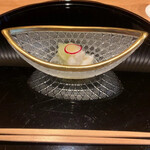

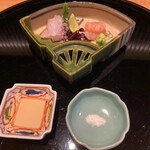
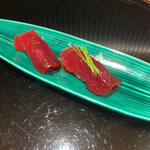
北麻布
4.50
Honestly, it was really great. Good service, good food, good atmosphere. The price is reasonable. Even if you don't stay at Aman, it's worth visiting this restaurant. The dimly lit, stylish interior with spotlights illuminating the space. The assistant chef who accompanied us this time was engaging. We were able to enjoy the meal with his explanations. The 18,000 yen course had satisfying portions. I would like to visit again when I go to Kyoto.
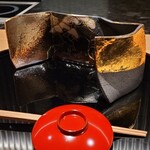
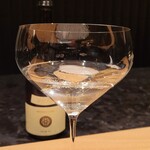
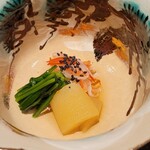
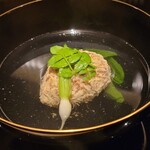
恵理60776
3.80
For Christmas dinner in 2020, we had a luxurious evening at Aman Kyoto enjoying a private dinner of Japanese cuisine at Takanoya with just the two of us. We ordered a bottle of Kenzo's Asatsuyu for drinks.
- Appetizer: Steamed Yuba with toppings of sea urchin, lily root, fiddlehead fern, and sweet bean paste.
- Appetizer: Assorted small dishes including sea urchin, salmon roe, yuzu, pickled radish, and persimmon.
- Soup: Clear soup with conger eel, millet gluten, water shield, shimeji mushrooms, and yuzu zest.
- Sashimi: Sliced red snapper and tuna with vinegar miso marinated ark shell.
- Grilled dish: Grilled bonito fish with fried ginkgo nuts and Taka-no-mine chili pepper.
- Simmered dish: Stewed dish with prawns, taro, pumpkin, chrysanthemum greens, shrimp, and yuzu.
- Vinegared dish: Vinegared dish with Matsuba crab, rehydrated wheat gluten cake, wood ear mushrooms, and Tosazu vinegar.
- Rice dish: Red snapper rice with red miso soup and pickles.
- Dessert: La France pear and strawberries.
- Sweet: Purple sweet potato Japanese confectionery.
- Matcha green tea.
It was an elegant Christmas dinner enjoying traditional Japanese cuisine at the counter.
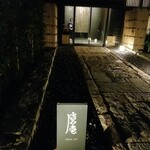
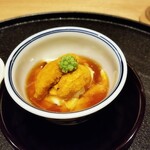
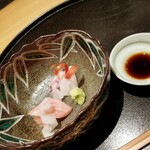
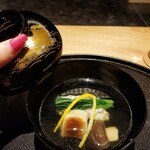
ANNY
5.00
Luxury [Aman Kyoto] A new hotel that opened in the autumn of 2019 at the back of the Golden Pavilion. The vast grounds include two types of restaurants. Here, we were guided by the hotel staff to the Japanese restaurant. We had a reservation for three people in a private room at 1:00 p.m. We are looking forward to enjoying delicious Kyoto cuisine while chatting quietly in a relaxing atmosphere. The food is delicious, beautiful, and delicate, and the hospitality is truly remarkable, as expected from a world-renowned hotel like the Aman Group. The cleanliness is outstanding, and the staff's energetic and friendly attitude, as well as their clear and helpful communication, make their service exceptional. Such a pleasant experience is hard to find even in other luxury hotels in Kyoto. The inviting atmosphere and excellent service make it feel like the number one choice in Kyoto. Due to the current pandemic, the hotel was surprisingly quiet. I visited Amandari in Bali about 20 years ago, and I can see that Aman has evolved even further, with a great atmosphere and a wonderful environment. Merci beaucoup.



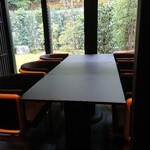
たまごの神様
4.60
The Ishikawa water has a slimy texture, Kagoshima prefecture shrimp is half-raw, with a spicy vinegar miso accent. Awabi from Awaji Island, red snapper from Nagasaki, and Aichi-style taiyaki sashimi. Thinly sliced pumpkin, vinegar dish with Junsa from the southern part of Shiga prefecture, and Noto mozuku chawanmushi. Soft and mysterious texture, delicious! Taro stem and Nemuro sea urchin, direct from Hakodate, grown cherry salmon! Crispy texture with a fluffy feel, goes well with the lightness of the sea urchin. Wagyu beef, Nagano Ichibo with wasabi, looks fatty but surprisingly refreshing! Grilled eggplant with miso, soft and creamy with a rich miso flavor!
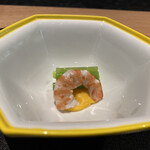
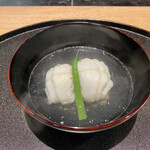
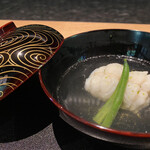
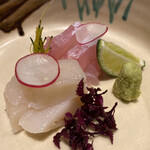
glen&milk
4.50
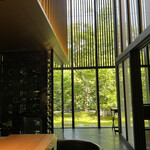

wzxan
4.00
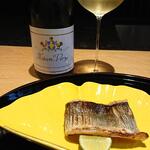

satoko20
4.00
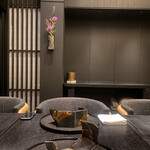

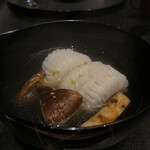
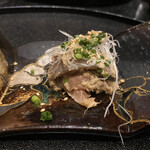
p_mm_q
0.00
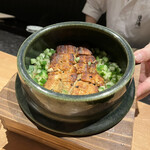
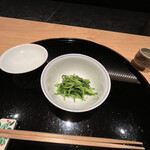
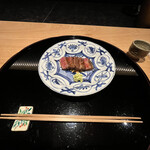
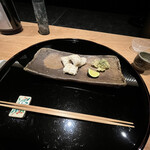
登志光
4.00
Relaxing atmosphere, negative ions!
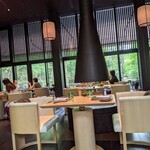
fukun956
4.20
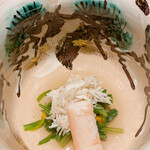
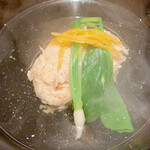

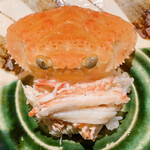
浜田 岳文
0.00
Takaan | Kyoto, Japan
Located in the Aman Kyoto resort in Takagamine, Kyoto, this new kaiseki restaurant recently opened its doors. I was invited to a media reception at the restaurant. The head chef of the restaurant is Mr. Takagi from the long-established ryotei "Zenyaya" in Kanazawa. He splits his time between Kanazawa and Kyoto, spending half of his time at this restaurant. I have stayed at around 20 Aman resorts in the past and consider myself a fan, but I have often found the dining experiences lacking, to the point where I would venture out for meals even when staying at the resort, unless it was in a very remote location with no dining options. However, in recent years, the dining options at Aman properties seem to have improved, with some locations becoming destinations for dining even for those not staying overnight. Bringing in Mr. Takagi from "Zenyaya" shows a serious commitment to culinary excellence. In a city like Kyoto, known for its abundant kaiseki options, this move is a bold statement. However, with Mr. Takagi's background in Kyoto and longstanding relationships with local suppliers, the ingredients are top-notch. In addition to traditional Kyoto fare like manjubai and chibu-ni, there are also creative elements reminiscent of Kanazawa's kaiseki cuisine. One dish that particularly stood out was the abalone steak, steamed for 5 hours before being grilled. The result was a perfectly tender yet flavorful dish, a rare feat considering how many abalone dishes lack depth of flavor despite their appearance and texture. The menu included dishes like appetizers of white yam stem and sweet shrimp, a soup with sea bream and sea urchin, and a sushi course with tuna and water eggplant. The meal continued with dishes like eel with caviar and sesame tofu, abalone steak, simmered beef with burdock, and a crab rice dish. The meal concluded with seasonal fruits and traditional Kyoto sweets.
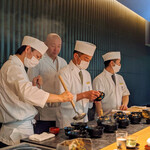
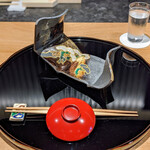

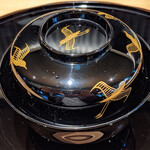
kozachibi
0.00
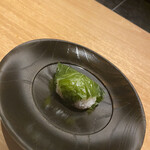
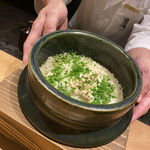
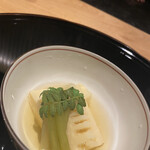
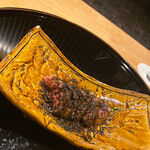
井上愛美
0.00
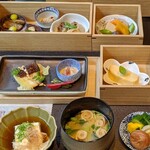
Email Login